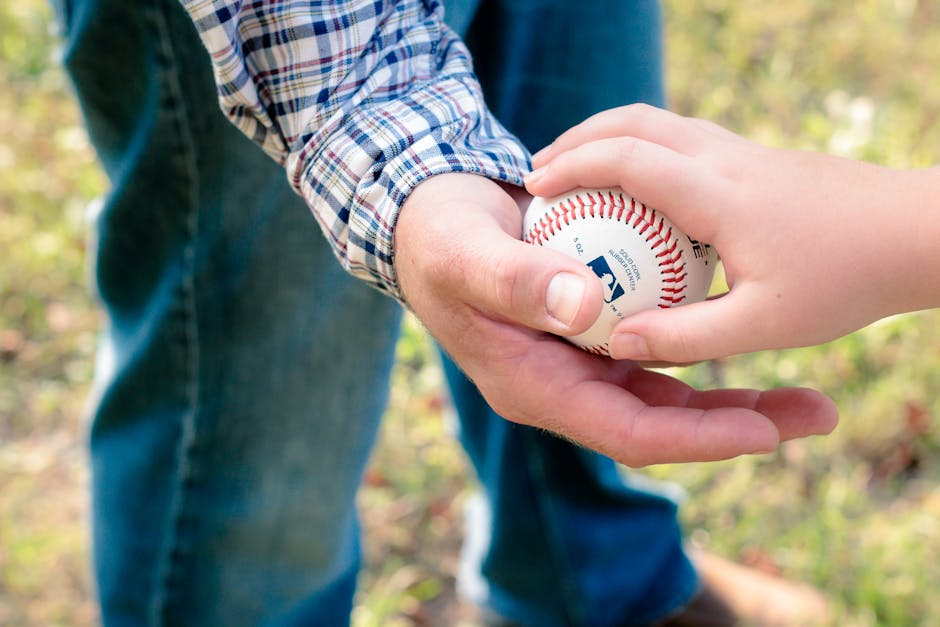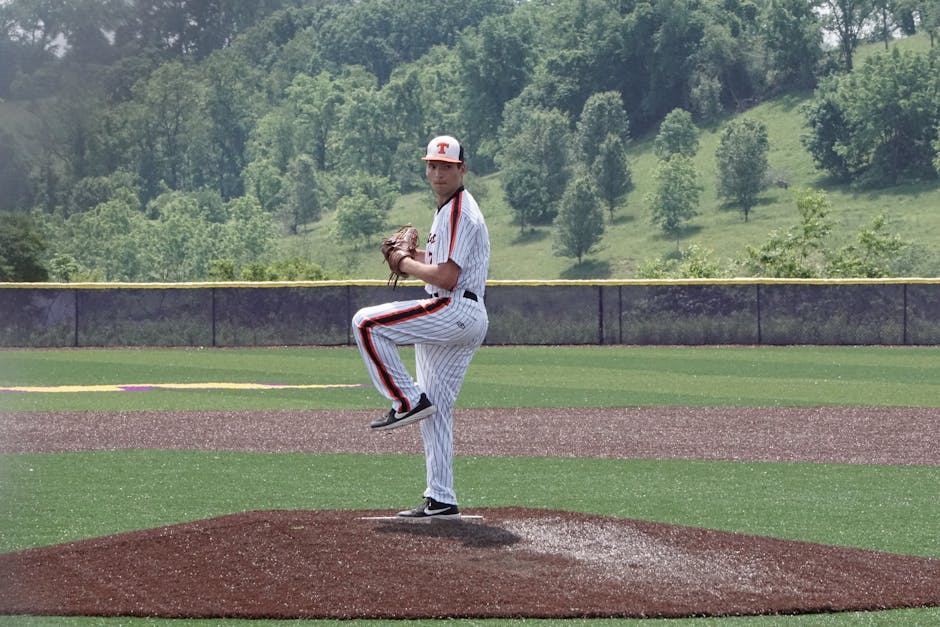Cracking the Code: How to Improve My Pitching in Baseball like a Pro!
Welcome fellow baseball enthusiasts!
Getting ahead in baseball may seem challenging but with the right technique, you can drastically improve your pitching. Just like hitting a ball requires timing and coordination, pitching too has its nuances that need to be mastered.
Pitching is not just about strength and speed, it's a craft that requires precision, control, and a good understanding of the game. By harnessing these key elements, you'll notice your game starting to elevate.
This blog post will provide a step-by-step guide on how to plan your pitch, the right form and the correct coaching techniques which will assist in improving your baseball pitching dramatically.
Stay with us as we help unleash the ace pitcher within you.
Understanding Baseball Pitching Basics: An elementary coverage of the basic principles, such as the phases of pitching and various types of baseball pitches.

Understanding the basics of baseball pitching revolves around appreciating its two core components : the phases of pitching and different types of pitches.
In a nutshell, pitching in baseball involves three stages . First, the windup phase, where the pitcher engages in movements to generate momentum for the throw. The next is the stride phase, the moment when the pitcher unleashes the ball towards the batter. Finally, the follow-through phase, the crucial milliseconds after releasing the ball that greatly affect its trajectory and speed.
Knowing different types of pitches is equally important. Fastballs, curveballs, sliders, and changeups, each have distinct techniques and influences on the ball's trajectory and speed.
Adopting these fundamental concepts into your practice will enhance your understanding and performance in baseball pitching.
Physical Preparation for Better Pitching: A detailed look into the importance of overall physical fitness, strength, and flexibility for improved pitching skills.

Photo by Michael Morse on Pexels
The foundation of an excellent pitch is a strong and flexible body. Regardless of talent or technique, without proper physical preparation , your skills might not reach their full potential.
A robust physical fitness routine is crucial to enhance your pitching capabilities. Regular cardiovascular exercises can increase your endurance levels, aiding in maintaining consistent pitches throughout the game.
Strength training, focusing on your arms and shoulders, can offer better speed and control over your pitches. But, remember balance is key; neglecting other muscle groups could lead to injuries.
Flexibility is another significant aspect to consider. More flexible muscles could mean a wider range of motion, allowing smoother, more agile movements when you pitch. Yoga and dynamic stretching can work wonders here.
Incorporate these elements into your training routine and see your pitching improve.
In the next section, we will dive into specifics of strength and flexibility exercises for baseball pitchers.
Psychological Planning for Pitching: An insight into the crucial role of mental preparation and mindset in enhancing pitching performance.

Your mental framework plays a pivotal role in determining your performance on the baseball field, particularly in pitching. Mental preparation is as important as physical preparation.
The first step towards efficient psychological planning is setting achievable goals. Define what a successful pitch looks like for you, and hone your skills around accomplishing this.
Focus is key. A concentration lapse of even a split second could lead to a missed opportunity. Quiet your mind to shun distractions and give your best performance.
A good pitcher is a self-aware pitcher. Be mindful of your emotions on the field. Manage your stress levels effectively to keep negative thoughts from influencing your game.
Finally, remember that confidence is crucial. Believe in your abilities, celebrate your strengths, and understand that a bad pitch does not define your overall performance.
With mental resilience and a healthy mindset, you can significantly improve your pitching performance.
Importance of Proper Grip in Baseball Pitching: A highlight on how different grip techniques affect the ball's speed and movement, with tips to achieve the best grip.
Understanding the role proper grip plays in baseball pitching is crucial for a powerful pitch. The way you hold the ball significantly influences its speed and movement. A firm grip, for instance, may add velocity but reduces control while a loose grip might offer more control but sacrifices speed.
Mastering the correct grip technique can help you strike the perfect balance between speed and movement. Experts suggest maintaining a moderate grip pressure, akin to holding an egg without cracking it.
Keep adjusting your grip until you find the one that offers optimal comfort and control. Remember, the best grip is often the one that feels the most natural to you.
With a little practice, improving your grip can dramatically enhance your pitching performance making it a skill worth investing in.
Perfecting your Pitching Delivery: An in-depth guide on improving the stance, wind-up phase, stride, and follow-through for a robust and effective delivery.

Improving your baseball pitch starts with mastering the fundamentals. Begin in a relaxed stance; feet shoulder-width apart, arms at your sides. Balance is key. It allows for a smoother transition to the wind-up phase.
A good wind-up sets the stage for an effective pitch. Keep your weight centered, start your wind-up, and as you step back with your pivot foot, lift your lead foot gently . The movement should be fluid and steady.
Next is the stride. A consistent stride length aids in maintaining accuracy and power in your pitches. A well- timed release point can enhance this even further.
Lastly, make sure you always follow through. Swivel around your pivot foot, turning your body towards the target. The follow-through helps in maintaining balance and adds power to the pitch.
Remember, practice makes perfect . Repetition will help to cement these movements into place.
Training Drills to Improve Pitching Skills: An exhaustive list of beneficial training exercises and drills which can significantly boost pitching prowess.

Delving into specific exercises can make a significant impact on one's pitching abilities.
Consider starting with the Towel Drill, which helps in mastering the proper form and improving control.
Next, a focus on the Long Toss, a drill meant for building up arm strength while promoting a solid pitching technique . Then move on to the Pitching Accuracy Drill, a perfect exercise for polishing up pinpoint precision with every throw.
The Bullpen Sessions help to get in the rhythm and feel of actual game-like scenarios, working on consistency in your delivery and accuracy.
Lastly, throw in some Core Strength Drills to improve overall fitness and power in your pitches. Incorporating these training drills into your regular practice can provide a pronounced boost in your pitching prowess. Never forget, the key to success lies not just in your talent but your discipline and determination.
Common Mistakes and How to Avoid Them: A cautionary segment warning about typical errors often committed while pitching and the steps to rectify them.

Avoiding mistakes can drastically improve a baseball pitch.
One common blunder is inconsistent stride length , which can compromise your balance. Consistency is key; so, find a comfortable stride length and stick to it.
Another typical error is rushing through the wind-up. This affects your control over the pitch. Practice patience and time your wind-up correctly to ensure a stable release.
Lastly, not using lower body strength is a widespread mistake. Pitching isn't just about arm strength! The real power comes from the legs and core. Incorporate full-body conditioning into your workout routine to enhance your pitching performance.
By becoming aware of and rectifying these common mistakes, you can significantly improve your pitching skills.
Resources for Additional Training: Pointing out helpful resources such as books, websites, and coaches that can aid in developing sound pitching techniques.

For those looking to enhance their techniques, several resources are available.
A proven favorite is the book "The Art of Pitching" by Tom Seaver, packed with valuable insights and practical exercises. Online platforms like BaseballReference.com provide a wealth of knowledge on the game's mechanics, statistical analysis, and videos for visual learners.
Additionally, consider enlisting the aid of a professional coach. They provide direct feedback and tailored training plans , akin to your individual needs.
Another online resource is the Major League Baseball's official website, where you can learn directly from the pros themselves through tutorials.
Remember, practice is key. Thus, harness these resources and strive to integrate what you learn into regular training sessions .


